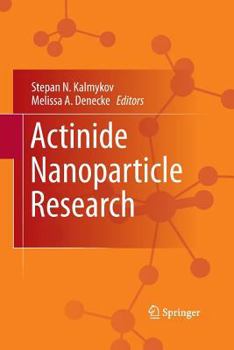Actinide Nanoparticle Research
Select Format
Select Condition 
Book Overview
Actinide - nanoparticle interaction. Generation, stability and mobility.- Section 1. Methods for actinide nanoparticle characterization: Scanning transmission electron microscopy and related techniques for research on actinide and radionuclide nanomaterials.- Resonant inelastic soft x-ray scattering spectroscopy of light-actinide materials.- Characterization of colloid borne actinides by Flow Field-Flow Fractionation (FlFFF) Multi Detector Analysis (MDA).- Actinide nanoparticle characterization by mass spectrometry.- Synchrotron-based X-ray spectromicroscopy of organic nanoparticles complexing actinides.- Section 2. Modeling of actinide nanoparticle structure and behavior: From molecules to nano-particles - A computational chemist's point of view.- Theoretical analysis of colloid-facilitated transport of radionuclides by groundwater.- Section 3. Interfacial phenomena and formation of actinide nanoparticles: Nanoscale chemistry of uranyl selenates.- Actinide thin films as surface models.- Sorption and speciation of uranium on silica colloids.- Section 4. Environmental behavior of actinide colloids and nanoparticles: Radioactive particles released into the environment from nuclear events.- Effect of redox conditions on actinide speciation and partitioning with colloidal matter.- X-ray absorption spectroscopy of plutonium particles at the Rocky Flats US Nuclear Weapons Production Site.- Colloid facilitated transport of plutonium at the Nevada Test Site, NV USA.- Speciation of actinides in granite subjected to tracer studies.





